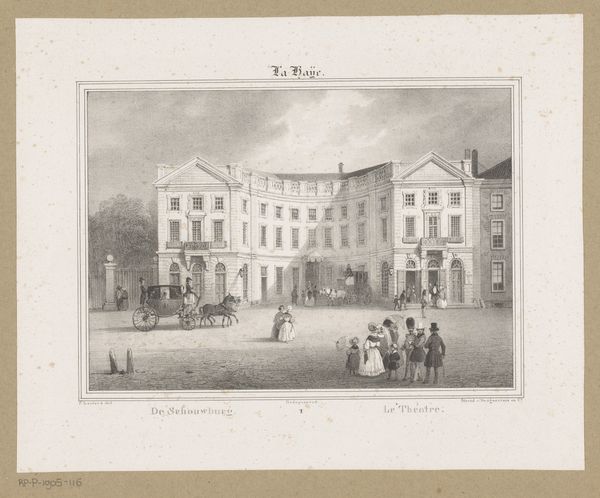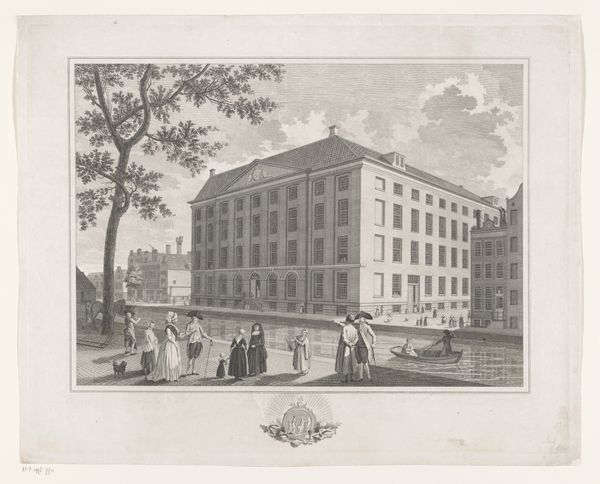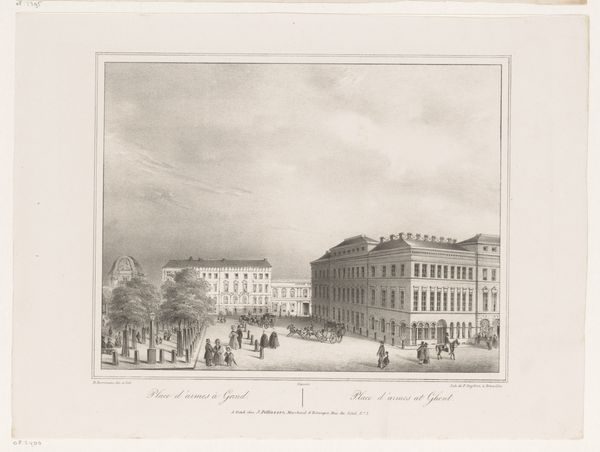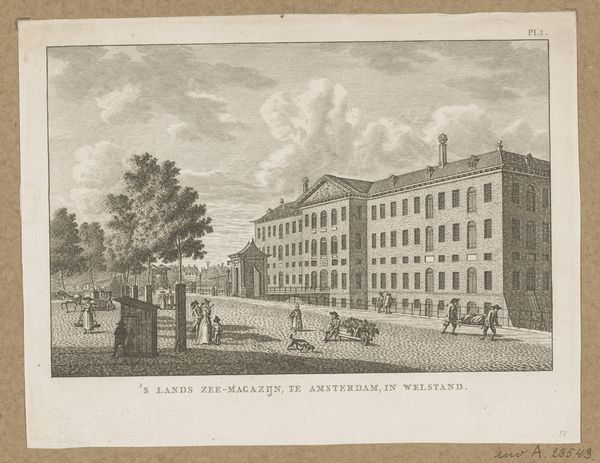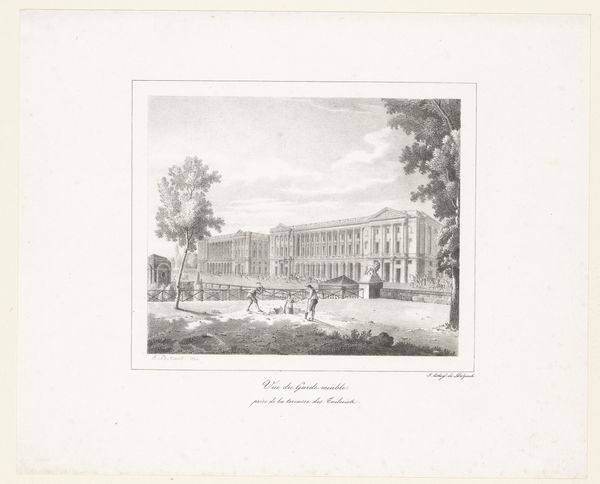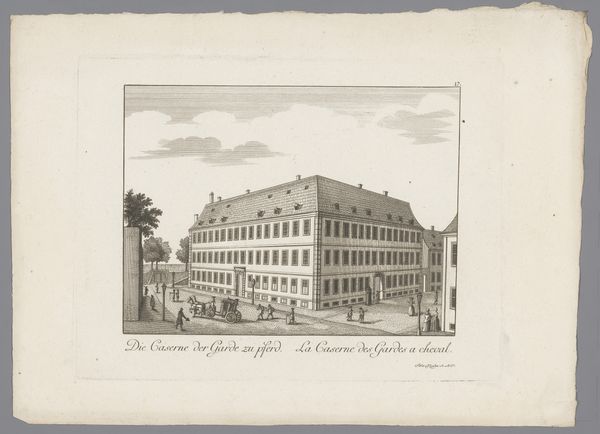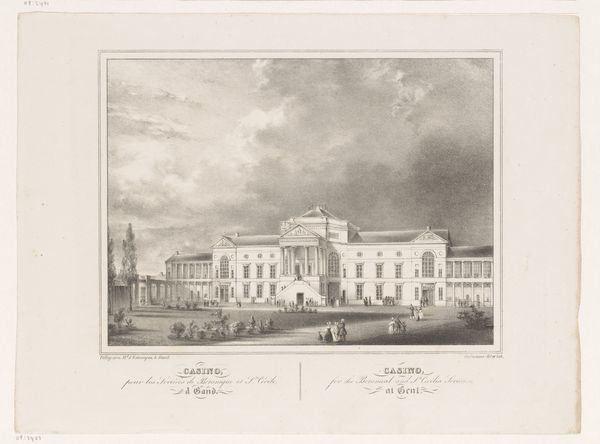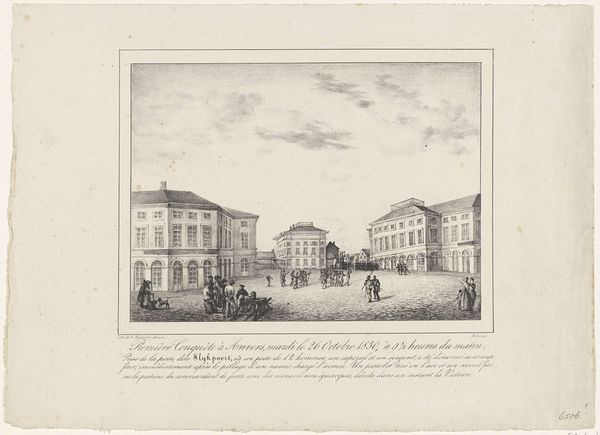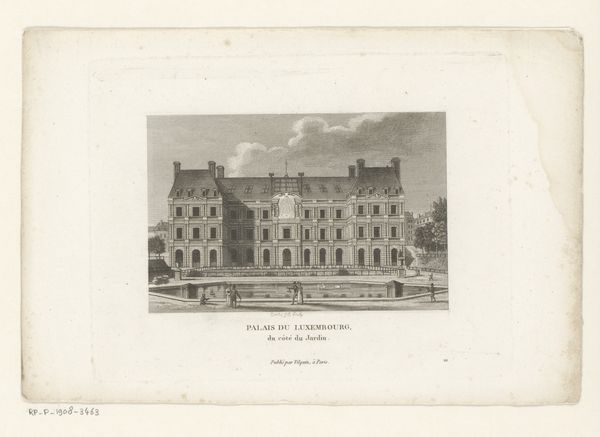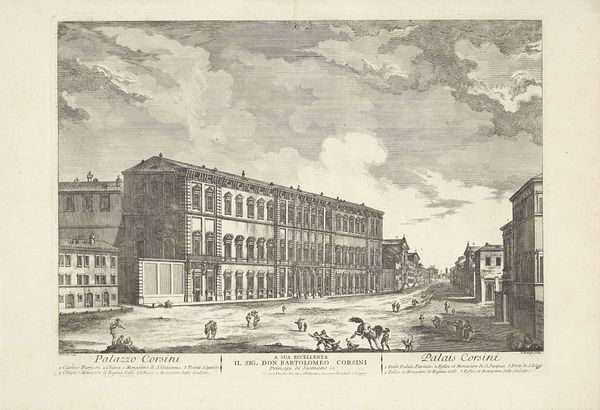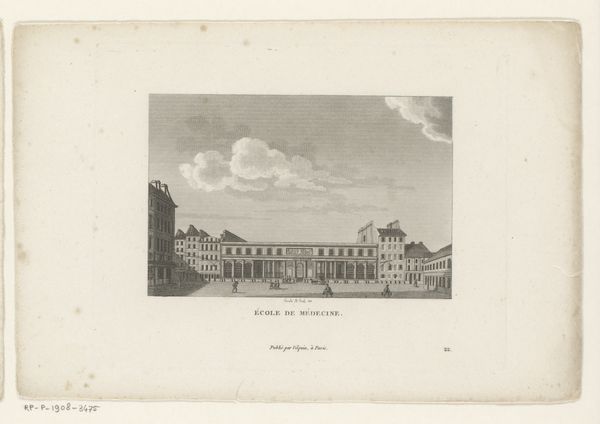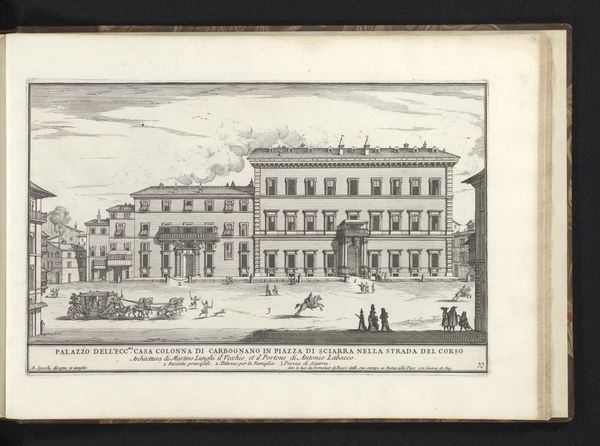
drawing, print, engraving
#
drawing
# print
#
landscape
#
romanticism
#
cityscape
#
engraving
Dimensions: height 347 mm, width 504 mm
Copyright: Rijks Museum: Open Domain
Henri Borremans made this print of the Posthotel in Ghent, Belgium, sometime in the 19th century. It depicts a bustling urban scene, complete with horse-drawn carriages and pedestrians. Borremans was working at a time of significant political change in Belgium, with the country gaining independence in 1830. Urban spaces such as this would have been centers of social and political life, and this print provides a valuable insight into the daily life of the people. The Posthotel itself would have been a site of cultural exchange and commerce, as people from different regions and countries passed through. It's interesting to consider how Borremans' print might have functioned within this context. Was it intended as a celebration of urban life, or a commentary on the social and political changes taking place? Historians can examine a range of documentary sources to further understand the social and political context of this print. What can we find out about the history of the Posthotel and the function it served? What do contemporary accounts tell us about the political dynamics of urban spaces in Ghent? The meaning of this work changes as our historical understanding develops.
Comments
No comments
Be the first to comment and join the conversation on the ultimate creative platform.
